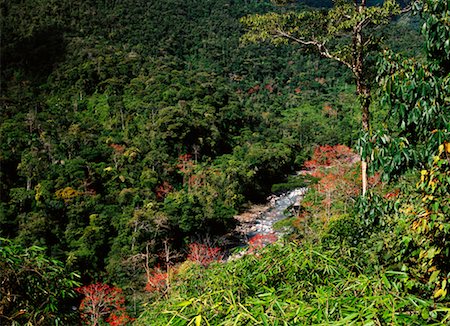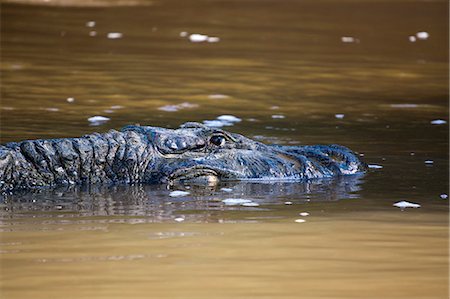-
Tourist boat on Lake Salvador, Manu National Park, Peru, South America
Con derechos protegidos
-
Giant river otters (Pteronura brasiliensis). These grow to over 6 feet (1.8m) long. They hunt in family groups and are known as river wolves. They are one of the rarest mammals on the planet due to having been hunted for their pelts. An adult male basks in the afternoon sun during the seven hours a day spent hunting for fish.
Con derechos protegidos
-
A family of 14 capybara (Hydrochoerus hydrochaeris). These are the world's largest rodent weighing up to 140lbs (65kg). The jaguar is their main enemy.
Con derechos protegidos
-
Rhinoceros beetle (megasoma elephas). The horn is used to tip over rival males. When flying their wingspan can reach six inches across.
Con derechos protegidos
-
Pierid butterflies. Absorb minerals from the urine of capybaras deposited on the beach half an hour previously. Minerals are extremely hard to come by in the Amazon rain forest and are sought out wherever they can be found.
Con derechos protegidos
-
Algae on an Amazonian oxbow lake. Over 90% of lowland forest has at one time or another been a lake or riverbed. The river bends that form oxbow lakes eventually silt up and are overgrown by swamp,bamboo and other fast growing secondary forest trees.
Con derechos protegidos
-
Sunset on a bend of the Upper Manu River. The rivers are the highways of the Amazon. Ecotourists riding back from a day's wildlife watching are rewarded with the sight of a tropical sky reflected on the surface.
Con derechos protegidos
-
Community spiders create huge webs enveloping entire trees. Here the dew drops of dawn create a fairy tale effect. The fruit are Limas,a citrus similar to a grapefruit.
Con derechos protegidos
-
One of many hundreds of tree frogs found within Manu National Park. Note the suckers on its feet and the large eyes for nocturnal vision.
Con derechos protegidos
-
A five metre long Black Caiman surfaces on an oxbow lake. Seriously endangered as a species,they were hunted nearly to extinction in the 1950's. Within park boundaries larger specimens like this one are making a comeback.
Con derechos protegidos
-
Large black cayman, Manu National Park, UNESCO World Heritage Site, Peru, South America
Con derechos protegidos
-
White caiman (caiman crocodilus). Smaller of the two common South American crocodilians. Never as endangered as it's large Black relative due to the size of it's small pelt.
Con derechos protegidos
-
Red and green macaws (Ara chloroptera) gather in a tree at dawn before descending to a clay lick,where the minerals in the earth help neutralise the toxins given off by the plants they eat.
Con derechos protegidos
-
Horned Toad (Ceratophrys cornuta) . This is essentially a mouth with feet,and will eat anything smaller than itself,other toads included. Such is their camouflage that they are best found at night betrayed by eyeshine with a torch.
Con derechos protegidos
-
A hatchet faced tree frog (Sphaenorhynchus lacteus),one of the hundreds of species found within the park.
Con derechos protegidos
-
Rothschilds moth (Saturniidae Rothschidia) spreads its 8-inch (20cm) wingspan. It is one of the largest moths in the world.
Con derechos protegidos
-
A male Ameiva lizard ( Ameiva ameiva) follows the female seen vertically top left of the picture. His colouring matches leaf litter both long dead and recent.
Con derechos protegidos
-
Grass hoppers mating at night on a fern in the rainforest. The female is notably larger than the male.
Con derechos protegidos





















